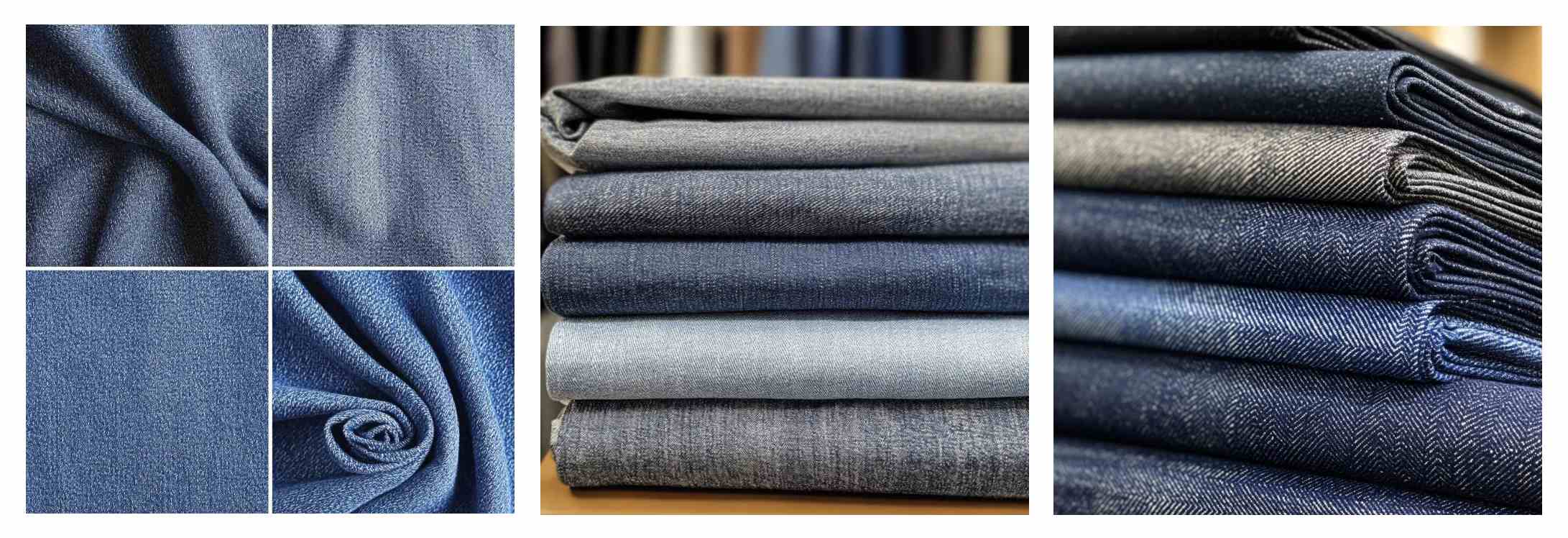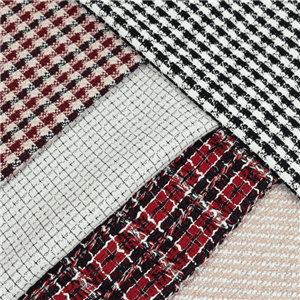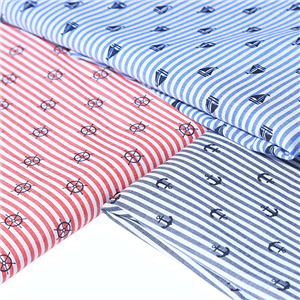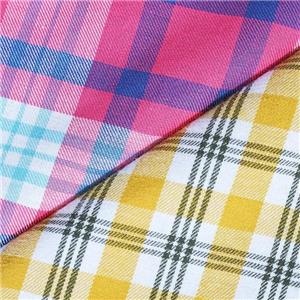Is Denim Always 100% Cotton?
Introduction
Denim has been around for centuries, originating in Europe before becoming a global fashion staple through its adoption in workwear, casualwear, and high fashion. Historically, denim was a rugged, woven fabric crafted entirely from cotton, prized for its durability and breathability. But with advancements in textile technology, the definition of denim has expanded. Today, denim fabric material can be 100% cotton or blended with synthetic fibers to meet modern consumer demands for comfort, flexibility, and sustainability.
So, is denim always 100% cotton? The short answer is no. To fully understand why, we need to break down denim fabric from its core structure, explore denim fabric types, and analyze how manufacturers are innovating with blends and finishes.

What is Denim Fabric Material?
Denim fabric material is a woven textile traditionally crafted using a twill weave, where the weft thread passes under two or more warp threads. This results in the classic diagonal ribbing pattern associated with denim.
Traditional composition: Historically, denim was woven entirely from cotton fibers, which provided strength and breathability.
Modern variations: Today, denim fabric material may include polyester for durability, elastane (spandex) for stretch, or even recycled fibers for sustainability.
This blend approach has diversified denim fabric types, allowing manufacturers to cater to specific needs like lightweight summer wear or high-performance stretch denim.
Is Denim Always 100% Cotton? A Historical vs. Modern Comparison
| Aspect | Traditional Denim (100% Cotton) | Modern Denim (Blended) |
|---|---|---|
| Fiber content | Pure cotton | Cotton + elastane/polyester/lyocell |
| Durability | Very strong, but rigid | Enhanced durability with flexibility |
| Comfort | Breathable but stiff | Softer, stretchier, form-fitting |
| Sustainability | Natural but resource-intensive | Often includes recycled fibers |
| Applications | Workwear, classic jeans | Fashion jeans, athleisure, jackets |
As the table shows, denim is no longer restricted to being 100% cotton. The inclusion of new fibers has expanded both its comfort and performance.
Denim Fabric Types
Denim is no longer a one-size-fits-all textile. Today’s market includes various denim fabric types, each serving different applications and fashion needs.
1. Raw Denim Fabric
Definition: Also called dry denim, raw denim fabric is untreated after dyeing.
Features: Stiff, dark, and unwashed. Over time, it molds to the wearer’s body, developing unique fades and creases.
Use: Popular among denim enthusiasts who appreciate personalization.
2. Selvedge Denim Fabric
Definition: A premium form of denim woven on traditional shuttle looms, producing a tightly woven edge (the “selvage”).
Features: Higher quality, more durable, and often considered a luxury denim fabric type.
Use: Premium jeans and limited-edition collections.
3. Stretch Denim
Definition: Blended with elastane for flexibility.
Features: Comfortable, body-hugging fit.
Use: Fashion jeans, jeggings, and athleisure wear.
4. Light Denim Fabric
Definition: A lightweight denim fabric material made with finer yarns.
Features: Breathable and soft, often blended for comfort.
Use: Summer wear, shirts, and dresses.
5. Recycled Denim
Definition: Denim made using recycled cotton fibers or post-consumer jeans.
Features: Eco-friendly, reduces textile waste.
Use: Sustainable fashion collections.
Why Denim is Blended With Other Fibers
The introduction of elastane, polyester, and lyocell into denim fabric material has clear advantages:
Comfort: Stretch blends provide freedom of movement.
Durability: Polyester strengthens the fabric against abrasion.
Eco-friendly innovation: Lyocell and recycled fibers reduce environmental impact.
Fashion flexibility: Allows denim to be produced in new styles like slim-fit jeans, which would be impossible with rigid 100% cotton denim.
Data Insights: Denim Market & Fiber Composition Trends
According to industry research:
Over 70% of denim jeans sold globally contain at least 2% elastane.
Only about 25% of denim fabric produced today is 100% cotton.
The demand for light denim fabric has risen by 18% year-over-year, reflecting consumer interest in breathable summer wear.
Selvedge denim fabric represents less than 5% of the global market but holds a luxury positioning with higher price points.
Denim fabric manufacturers in Asia (China, India, Bangladesh) account for over 60% of production, but sustainable production hubs are growing in Turkey, Italy, and the U.S.
How to Choose the Right Denim Fabric Material
When selecting denim, consider:
Purpose of use: Workwear vs. fashion wear.
Weight: Heavy (rigid, durable) vs. light denim fabric (breathable).
Fiber blend: 100% cotton for authenticity, elastane blends for stretch.
Sustainability goals: Recycled or organic cotton options.
Supplier reputation: Established denim fabric manufacturers often guarantee consistent quality.
FAQs
Is denim always 100% cotton?
No. While traditional denim was pure cotton, modern denim fabric material often blends cotton with elastane, polyester, or recycled fibers.
What are the most popular denim fabric types today?
The most common types include raw denim fabric, selvedge denim fabric, stretch denim, and light denim fabric.
Why do manufacturers add elastane to denim?
To make denim stretchier, more comfortable, and better suited for slim or skinny fits.
Is selvedge denim fabric worth the higher price?
Yes, for consumers seeking premium quality, durability, and craftsmanship. However, it is not essential for everyday wear.
Which countries lead in denim fabric manufacturers?
China, India, and Bangladesh dominate in volume, while Italy, Japan, and Turkey lead in premium and sustainable denim production.
Does light denim fabric mean lower quality?
Not necessarily. Light denim is designed for breathability and style versatility, not heavy-duty durability.
Latest Trends in Denim Fabric
Sustainability: Brands are increasingly using organic cotton and recycled materials.
Stretch innovation: Blends with advanced fibers improve elasticity without losing the denim feel.
Luxury revival: Selvedge denim fabric and raw denim fabric are making comebacks in niche fashion circles.
Customization: Consumers seek personalized fading patterns and vintage effects.
Eco-conscious dyeing: New waterless and plant-based dyeing techniques are reducing environmental footprints.
Conclusion
Denim is no longer restricted to being 100% cotton. While classic denim fabric material was traditionally pure cotton, today’s textile innovation allows for a wide spectrum of blends and applications. From raw denim fabric to selvedge denim fabric and from light denim fabric to stretch blends, consumers can now choose denim fabric types based on style, comfort, and sustainability preferences. For buyers and brands, working with reliable denim fabric manufacturers is crucial to ensure quality, consistency, and eco-friendly practices.
At HonryFabric, we specialize in premium woven fabrics, including diverse denim fabric material solutions that balance tradition with modern innovation. Whether you are looking for lightweight, durable, or sustainable denim fabric types, our team can provide tailored solutions. Visit our homepage to explore more: https://www.honryfabric.com/




